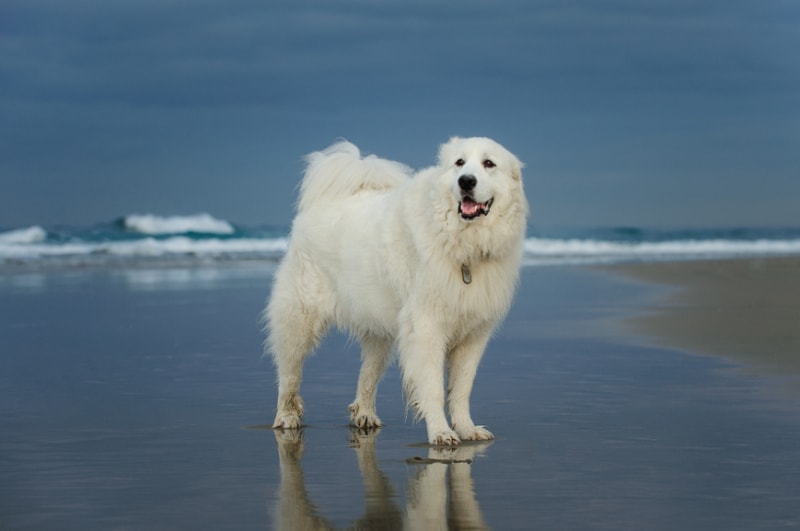Water Rescue Dogs: History, Overview & FAQ

Updated on
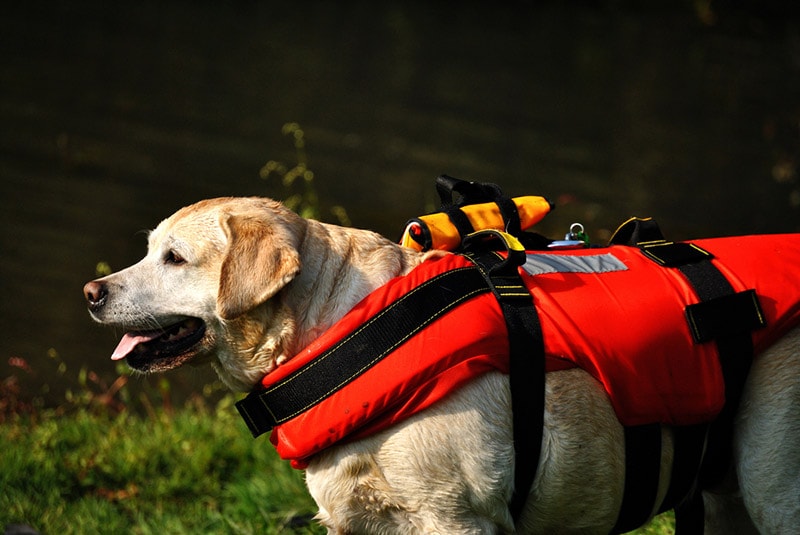
Click to Skip Ahead
Water Rescue Dogs are highly trained canines that have been trained specifically to rescue humans who are in distress in the water. These dogs are not to be confused with other breeds of dogs that enjoy swimming or water-based activities. They are highly skilled and are trained to work under extreme conditions. In this article, we will look at everything you need to know about water rescue dogs, from their different types to their advantages and disadvantages.
What Is a Water Rescue Dog?
A water rescue dog is a specially trained dog that is used to assist in various water rescue operations. These dogs are trained to be comfortable working in water and can swim long distances. They are paired with human handlers who direct them toward the target or rescue operation. Water rescue dogs are highly trained and are capable of performing various tasks to help with the rescue process.
Water rescue dogs are trained to work in different areas, such as rivers, oceans, and pools. Their training includes swimming in different currents and weather conditions to prepare them for rescue operations. They also undergo extensive training in detecting human scents in water and following those scents to locate the distressed individual.
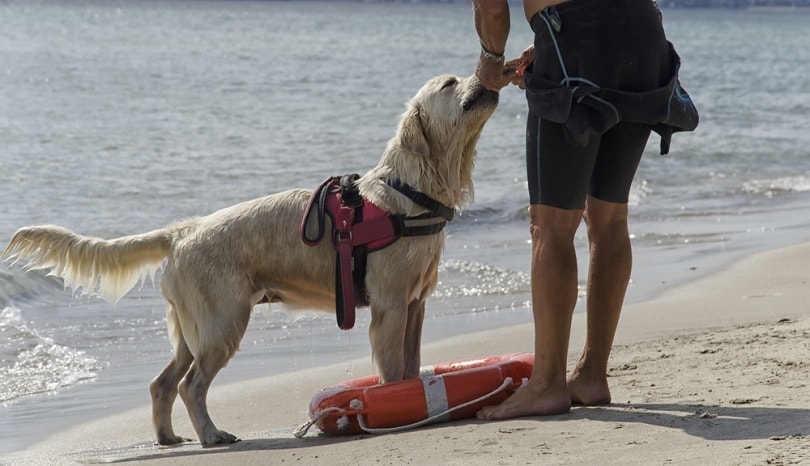
The History of Water Rescue Dogs
Water rescue dogs have been used in water rescues since the late 1800s. The first recorded usage of a water rescue dog was in 1883 by the Royal Humane Society, who trained a Newfoundland named Jacko to assist in the rescue of two children from an icy river. Since then, water rescue dogs have been used in various rescues around the world. They are an invaluable asset to any rescue team, as they can be deployed quickly and provide assistance at a moment’s notice.
Agencies That Use Water Rescue Dogs
A number of agencies and organizations use water rescue dogs. This includes fire departments, search and rescue teams, military personnel, law enforcement officers, and even private individuals. These dogs are usually trained to work in various locations, including rivers, lakes, beaches, and oceans.
Overview of Water Rescue Dog Training
Water rescue dog training is an extremely tough and challenging process. The dogs must be able to master the basics of swimming, obedience, scent detection, and tracking before they can even begin their specialized water rescue training. For this type of training, the dogs must swim in turbulent waters, dive underwater for extended periods, and locate objects using only their sense of smell.
After mastering these skills, the dogs are tested on land to ensure they can perform basic tasks such as staying still while being held by a handler or following a certain direction. Once they can perform all these tasks, they can move on to more advanced missions requiring them to navigate difficult terrain or respond quickly in stressful situations.

Top 10 Most Common Water Rescue Dog Tasks
- Swimming to retrieve an object or person in distress.
- Water searches or searches on boats for missing people.
- Detecting underwater objects.
- Tracking via water scent.
- Transporting equipment and supplies to rescue victims.
- Scouting and assessing a situation and providing early warning signals.
- Crowd and traffic control.
- First aid, including providing life-saving support for drowning victims.
- Suit and watercraft manipulation to help rescuers do their job more efficiently.
- Acting as a liaison between rescuers and those in distress.
Different Water Dog Rescue Scenarios Explained
- A dog is sent into a lake to search for a missing person or object. The water rescue dog will use their sense of smell and buoyancy to locate the target quickly.
- A boat capsizes during a storm, leaving people stranded in the water. Water rescue dogs can be used by rescuers to identify survivors and bring them to safety.
- Someone falls off a dock and is struggling to stay afloat and close enough to shore so they can be rescued. In this situation, water rescue dogs are trained to swim out and retrieve them with minimal risk of further injury or fatigue on the part of the victim or rescuer.
- In situations where an individual has gone into deep waters, such as a river or ocean, a water rescue dog is used to track their scent and aid rescuers in finding them quickly.
- During natural disaster relief efforts, such as floods, water rescue dogs are used to identify and save victims from danger. They can also be used to transport supplies and equipment during the relief effort.
What Are the Different Types of Water Rescue Dogs?
There are different types of water rescue dogs, but they all serve the same purpose of rescuing drowning or distressed people in the water.
- Newfoundland Dogs: Large dogs with thick coats and webbed feet make them great swimmers.
- Labrador Retrievers: These are great water rescue dogs with high energy and intelligence.
- Portuguese Water Dogs: These are great for water rescues due to their agility in the water.
- Golden Retrievers: These are known for their loyalty and can be trained to be efficient water rescue dogs.
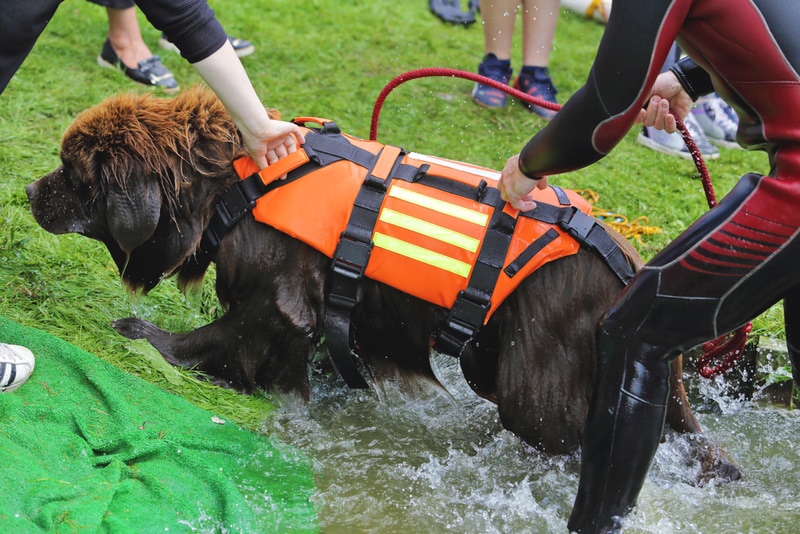
In What Situations Are Water Rescue Dogs Used?
Water rescue dogs are used in many different situations, including natural disasters such as floods, hurricanes, and tsunamis. They are also used in situations where individuals are lost or in danger while engaged in water-based activities such as swimming, fishing, or boating. During times of crisis, these dogs perform their tasks alongside human first responders.
Advantages of Water Rescue Dogs
- High success rates: Water rescue dogs have high success rates in rescuing people in distress due to their training and ability to detect someone in distress underwater.
- Quick response time: The dogs have been trained to react quickly to situations and start with the rescue process as soon as possible.
- Can work under extreme conditions: Water rescue dogs are trained to work under extreme weather and water conditions.
Disadvantages of Water Rescue Dogs
- Cost: Training and maintaining these dogs for a water rescue operation can be expensive.
- Require special care: These dogs require rigorous training and care, which can be time-consuming.
- Limited availability: Water rescue dogs may not be available in all places, making response times even slower in some cases.
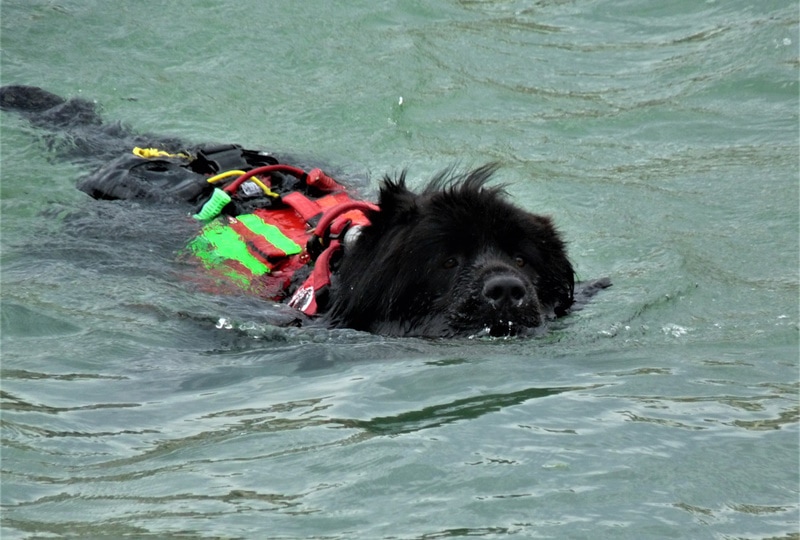
Frequently Asked Questions (FAQ)
Q: How long does it take to train a water rescue dog?
A: It takes approximately 2 years to fully train a water rescue dog.
Q: Are there any special certifications needed for water rescue dogs?
A: Yes, some organizations offer certifications for water rescue dogs such as the American Kennel Club’s Canine Good Citizen certification or the National Rescue Dog Association’s Water Rescue Dog certification program. These certifications provide an additional layer of recognition and assurance that the dog has received proper training in water operations and is qualified to work in this field. Furthermore, it also assures potential employers that the dog is safe and trained to handle water rescue operations.
Q: What kind of canine breeds are used for water rescue operations?
A: Some common breeds that are used for water rescue are Labrador Retrievers, Newfoundland Dogs, and Golden Retrievers.
Q: Are water rescue dogs trained for specific types of weather conditions?
A: Water rescue dogs are trained for different weather conditions to prepare them for the operational environment.
Q: Can any type of dog be a water rescue dog?
A: Not all dogs are well-suited for water rescue operations. Some breeds, such as Newfoundlands and Portuguese Water Dogs, have physical characteristics that make them better suited for swimming and working in the water. Other breeds may need additional training before they can be used as a water rescue dog. It is important to consult with a professional trainer to determine if a dog is suitable for water rescue operations.
Q: What type of equipment do water rescue dogs use?
A: Water rescue dogs typically use specialized flotation devices such as life vests and harnesses to help keep them safe while they are in the water. They also sometimes use tools such as ladders, ropes, stretchers, and other emergency medical equipment. Additionally, water rescue dogs may also be trained to use communication devices such as walkie-talkies.
Q: Where do water rescue dogs live?
A: Water rescue dogs typically live with their owners or handlers. They need to be in close proximity with their handler so they can practice and stay up to date on their training. Additionally, some organizations have dedicated facilities where the water rescue dogs are housed and trained.
A Quick Reference Guide
- Water rescue dogs are trained dogs specifically trained to rescue people who are in distress in the water.
- These dogs are trained to work in different water environments such as oceans, rivers, or pools.
- There are different breeds of dogs that are used in water rescue operations.
- Water rescue dogs are used in different situations, including natural disasters and during water-based activities such as swimming, fishing, and boating.
- Water rescue dogs require extensive training and care, which can be expensive and time-consuming.
How Can I Enroll My Dog in Water Rescue Skills Training?
Enrolling your dog in water rescue skills training can be a great way to provide your pet with additional skills and give them the opportunity to lend a helping paw during emergencies. Some organizations that offer water rescue dog training include the National Search and Rescue Dog Association (NSARDA), the International Association of Canine Professionals (IACP), and the American Kennel Club’s Good Citizen program. These organizations have specialized trainers who can teach your dog the necessary skills needed for successful water rescue operations.
Before enrolling your pet in any type of water rescue program, research different options and find one that best suits you and your pup. Additionally, ensure you are prepared to provide proper care and training for your pet and the necessary equipment to ensure their safety during water rescue operations.
Last but not least, make sure you reward your pup after each successful mission. Dogs love praise and treats, so it’s a great way to show them how valued they are and encourage them to do their best in future rescue missions!
Conclusion
Water rescue dogs are invaluable assets for water-based rescues, and they require extensive training and care to be effective. They have a high success rate in helping people who find themselves in distress in the water, and they come from many different breeds, such as Labrador Retrievers, Portuguese Water Dogs, and Golden Retrievers. These amazing animals can complete tasks from swimming to retrieve an object or person in distress to transporting supplies during natural disaster relief efforts. If you want to learn more about water rescue dogs and their capabilities, contact your local animal service organization or search online for more information.
Featured Image Credit to pascalinaclaudiu, Shutterstock



